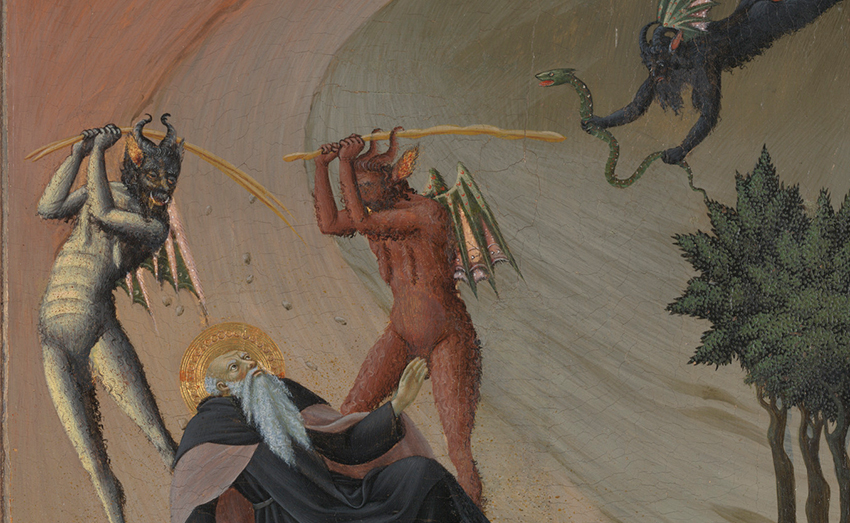3.1 Chapter Introduction

As explained in Chapter 1, criminology is the scientific field of study devoted to understanding the causes of crime. When we start talking about criminology, it is important to consider what was going on before this area of research existed (figure 3.1). That history (at least from the perspective of those in the United States) focuses on Europe. As we discuss different scholars who have been credited with these leading theories, their country of origin will be shared to let you know where this work started and how it spread. Later, when we talk about the early criminology work that was done in the United States, we will drop the focus on the country of origin and consider different key characteristics. Wealthy, educated, well-connected, white men in power predominately founded criminology—or at least, they are the ones who are given credit for it—and are the ones who determined what was criminal, undesirable, and punishable. As we discuss the origins and development of criminological theories, we should keep in mind the positionality (social identities) of those who contributed.
In this chapter, we will look at a brief history of crime and punishment to understand how the field of criminology was born. We will also revisit the common criminological paradigms that were initially discussed in Chapter 1. Finally, we will introduce foundational theories in the classical school of thought and look at how they influenced the creation of our modern criminal justice system.
Learning Objectives
After reading this chapter, students will be able to do the following:
- Discuss the foundation of criminological thinking in terms of the race, gender, and societal status of the theorists.
- Describe the origins of criminology as a field of scientific study.
- Analyze the broader context of what led to different schools of thought being embraced at their time in history.
- Compare the variations between the claims of the classical and positive schools.
- Explain the creation of seminal (classic) theories of criminology in the classical school.
- Describe how theories evolved from their origins in the classical and positive schools of criminology.
- Assess the modern relevance of classical criminological theories, particularly as they relate to current crime policy.
Key Terms
- Age of Enlightenment: a period of philosophical, intellectual, and cultural revolution in 17th and 18th-century Europe
- Aggravating circumstances: a circumstance or factor that makes the behavior seem worse or makes the offender more culpable
- Bounded rationality: the idea that offenders’ rationality in their decision-making is constrained by both time and relevant information
- Brutalization effect: a phenomenon, observed in some research, of increased violence or homicide after death penalty sentences are carried out
- Classical school of criminology: one of the two major traditional paradigms in criminology that emerged during the Age of Enlightenment; theories under this paradigm assume crime is the result of humans’ free will and rational decision-making
- Deterrence: in relation to crime, the prevention of criminal behavior due to the threat of consequences
- Deterrence theory: a criminological theory that posits that people will be deterred from committing crime if punishment is swift, severe, and certain
- General deterrence: all members of society being deterred from committing crime due to their understanding of the likely legal consequences
- Hedonistic calculation: the weighing of pain and pleasure that humans make in every decision they make; seek to maximize their pleasure and minimize their pain
- Mitigating circumstances: a circumstance or factor that makes the behavior seem less bad or makes the person who has committed the offense less culpable
- Neoclassical perspective: a new perspective and more modern approach to classical school criminology that considers circumstances that affect choice
- Panopticon: an architectural design for a prison with a central guard tower surrounded by a circle of cells that allowed for actual, or perceived, constant supervision and deterrence of bad behavior
- Positive school of criminology: one of the two major traditional paradigms in criminology that emphasizes the scientific method and is grounded in the positivist philosophy; theories within this paradigm assume that crime is determined or predisposed, to some degree, by one’s biology, psychology, or environment.
- Positivism: a philosophy stating that knowledge should be based on empirical evidence and what can be witnessed in research
- Pre-classical justice: the time period before crime and justice were studied scientifically and systematically when medieval societies viewed crime as the result of sin, demonic possession, or other supernatural causes and punished them severely or via religious interventions
- Rational choice theory: a criminological theory that posits that people weigh the pros and cons of their options and use a cost-benefit analysis to make their choices, including the choice to commit crime
- Routine activity theory: a criminological theory that sees crime as a function of people’s everyday activities and posits that crime occurs when a motivated offender, suitable target, and lack of capable guardians converge at one time and place
- Social contract: the voluntary relinquishment of some freedoms in exchange for order and safety provided by a sovereign government
- Specific deterrence: a specific individual being deterred from committing crime due to their experience being punished by the legal system previously
- Trial by ordeal: a medieval method in which the criminally accused would endure an experiment that “proved” whether or not they were guilty and if they were deserving of mercy
Licenses and Attributions for Chapter Introduction
Open Content, Original
“Chapter Introduction” by Taryn VanderPyl is licensed under CC BY 4.0. Revised by Jessica René Peterson.
Open Content, Shared Previously
Figure 3.1. “Saint Anthony Abbot Tormented by Demon” by Sano di Pietro is in the Public Domain, courtesy of Yale University Art Gallery.

